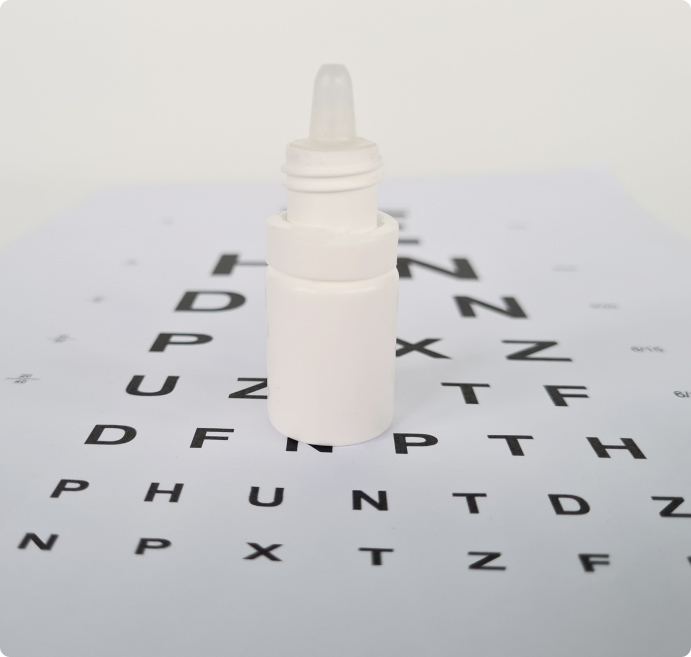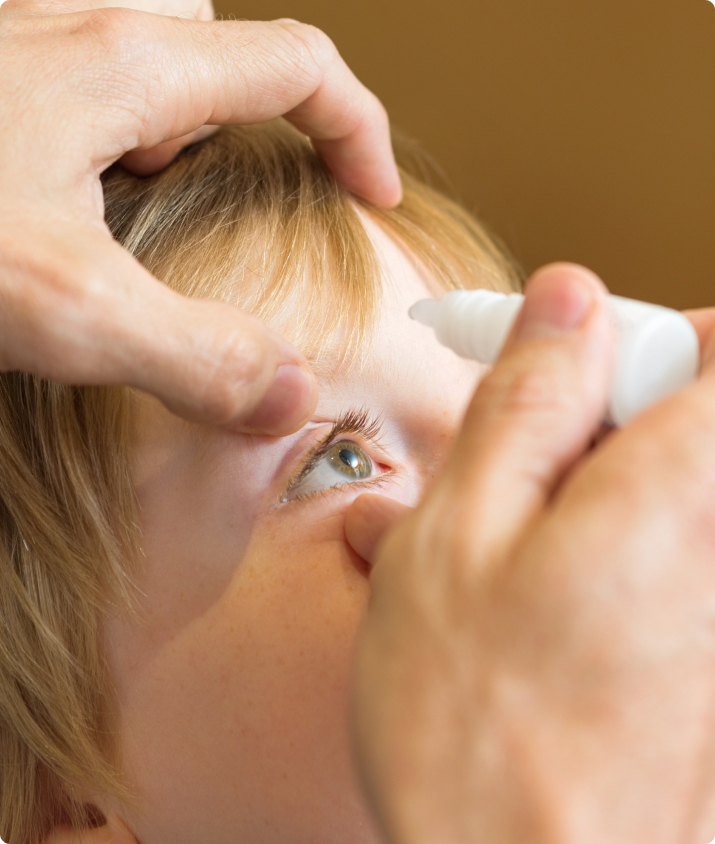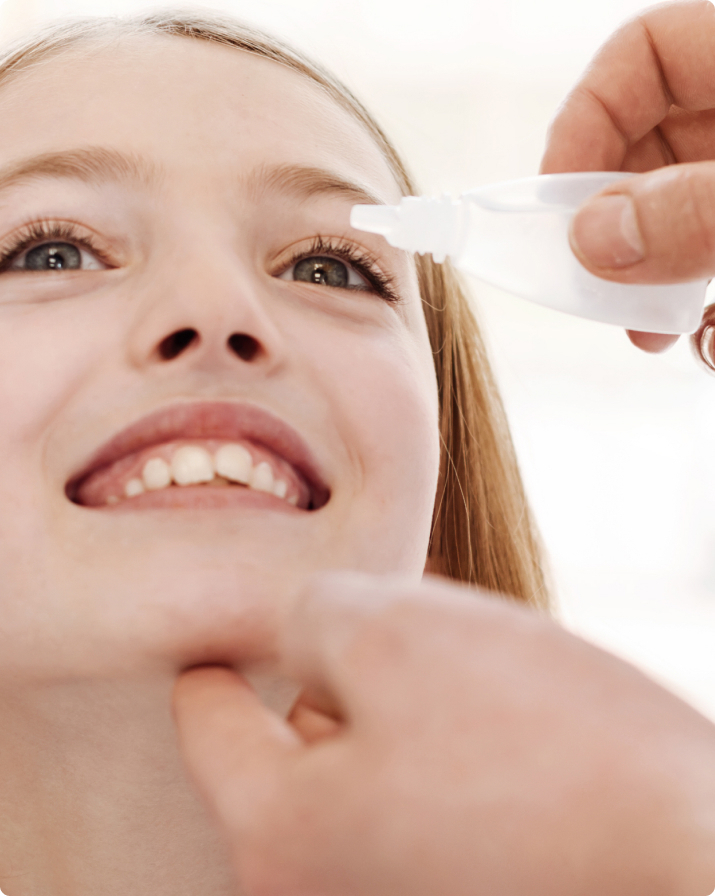Atropine Eyedrops
The lowest dose of 0.01 per cent has almost no side effects. There is minimal dilation of the pupil and almost no effect on the near vision ability for the children. In a double-masked, randomized study.study involving 400 children, Atropine 0.01% has minimal side effects compared with atropine at 0.1% and 0.5%, and retains comparable efficacy in controlling myopia progression
J AAPOS 2011 Apr;15(2):181-9. doi: 10.1016/j.jaapos.2010.09.020.

Ophthalmology 2006 Dec;113(12):2285-91. Epub 2006 Sep 25.
Leo SW, Young TL.
Myopia is the most common human eye disorder. With its increasing prevalence and earlier age-of-onset in recent birth cohorts, myopia now affects almost 33% of adults in the United States, and epidemic proportions of 85% to 90% adults in Asian cities. Unlike children in Western populations, where the prevalence of myopia is very low (less than 5%), Asian children have prevalences as high as 29% in 7-year-olds. In addition to the direct economic and social burdens of myopia, associated ocular complications may lead to substantial vision loss. This workshop summarizes the current literature regarding myopia epidemiology, genetics, animal model studies, risk factors, and clinical treatments. Published treatment strategies to retard the progression of myopia in children, such as pharmacologic agents, progressive addition lenses, and neural adaptation programs, are outlined.
Atropine for the treatment of childhood myopia.
Chua WH, Balakrishnan V, Chan YH, Tong L, Ling Y, Quah BL, Tan D.

Ophthalmology 2012 Feb;119(2):347-54. doi: 10.1016/j.ophtha.2011.07.031. Epub 2011 Oct 2.
To evaluate the efficacy and safety of topical atropine, a nonselective muscarinic antagonist, in slowing the progression of myopia and ocular axial elongation in Asian children.
Parallel-group, placebo-controlled, randomized, double-masked study.
Four hundred children aged 6 to 12 years with refractive error of spherical equivalent -1.00 to -6.00 diopters (D) and astigmatism of -1.50 D or less.
Participants were assigned with equal probability to receive either 1% atropine or vehicle eye drops once nightly for 2 years. Only 1 eye of each subject was chosen through randomization for treatment.
The main efficacy outcome measures were change in spherical equivalent refraction as measured by cycloplegic autorefraction and change in ocular axial length as measured by ultrasonography. The primary safety outcome measure was the occurrence of adverse events.
Three hundred forty-six (86.5%) children completed the 2-year study. After 2 years, the mean progression of myopia and of axial elongation in the placebo-treated control eyes was -1.20+/-0.69 D and 0.38+/-0.38 mm, respectively. In the atropine-treated eyes, myopia progression was only -0.28+/-0.92 D, whereas the axial length remained essentially unchanged compared with baseline (-0.02+/-0.35 mm). The differences in myopia progression and axial elongation between the 2 groups were -0.92 D (95% confidence interval, -1.10 to -0.77 D; P <0.001) and 0.40 mm (95% confidence interval, 0.35-0.45 mm; P<0.001), respectively. No serious adverse events related to atropine were reported.
Topical atropine was well tolerated and effective in slowing the progression of low and moderate myopia and ocular axial elongation in Asian children.
Chia A, Chua WH, Cheung YB, Wong WL, Lingham A, Fong A, Tan D.

Ophthalmology 2012 Feb;119(2):347-54. doi: 10.1016/j.ophtha.2011.07.031. Epub 2011 Oct 2.
Our previous study, Atropine for the Treatment of Myopia 1 (ATOM1), showed that atropine 1% eyedrops were effective in controlling myopic progression but with visual side effects resulting from cycloplegia and mydriasis. The aim of this study was to compare efficacy and visual side effects of 3 lower doses of atropine: 0.5%, 0.1%, and 0.01%.
Single-center, double-masked, randomized study.
A total of 400 children aged 6-12 years with myopia of at least -2.0 diopters (D) and astigmatism of -1.50 D or less.
Children were randomly assigned in a 2:2:1 ratio to 0.5%, 0.1%, and 0.01% atropine to be administered once nightly to both eyes for 2 years. Cycloplegic refraction, axial length, accommodation amplitude, pupil diameter, and visual acuity were noted at baseline, 2 weeks, and then every 4 months for 2 years.
Myopia progression at 2 years. Changes were noted and differences between groups were compared using the Huber-White robust standard error to allow for data clustering of 2 eyes per person.
The mean myopia progression at 2 years was -0.30±0.60, -0.38±0.60, and -0.49±0.63 D in the atropine 0.5%, 0.1%, and 0.01% groups, respectively (P=0.02 between the 0.01% and 0.5% groups; between other concentrations P > 0.05). In comparison, myopia progression in ATOM1 was -1.20±0.69 D in the placebo group and -0.28±0.92 D in the atropine 1% group. The mean increase in axial length was 0.27±0.25, 0.28±0.28, and 0.41±0.32 mm in the 0.5%, 0.1%, and 0.01% groups, respectively (P < 0.01 between the 0.01% and 0.1% groups and between the 0.01% and 0.5% groups). However, differences in myopia progression (0.19 D) and axial length change (0.14 mm) between groups were small and clinically insignificant. Atropine 0.01% had a negligible effect on accommodation and pupil size, and no effect on near visual acuity. Allergic conjunctivitis and dermatitis were the most common adverse effect noted, with 16 cases in the 0.1% and 0.5% atropine groups, and no cases in the 0.01% group.
Atropine 0.01% has minimal side effects compared with atropine at 0.1% and 0.5%, and retains comparable efficacy in controlling myopia progression.
